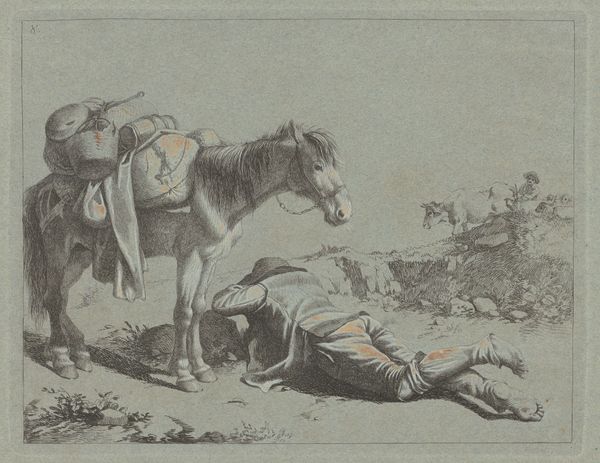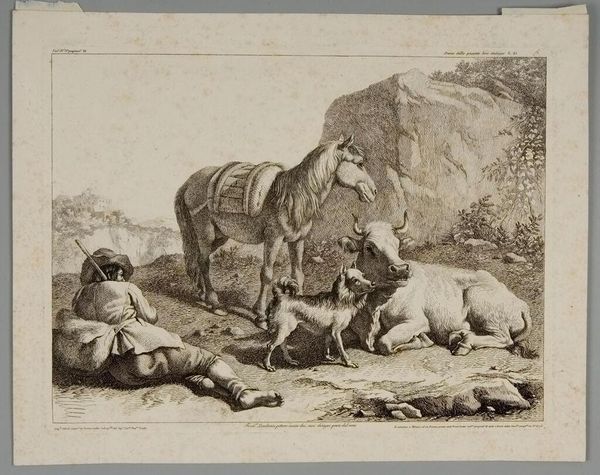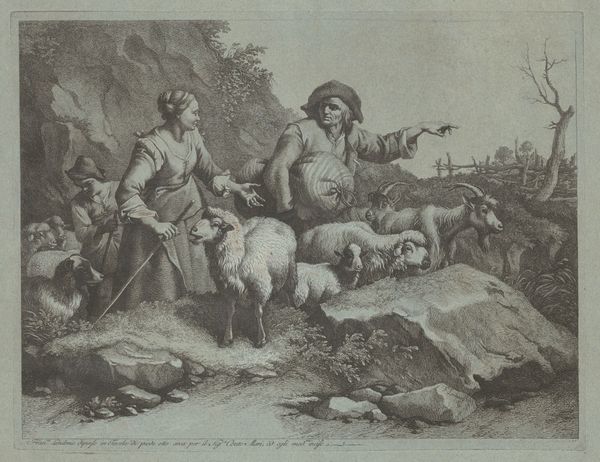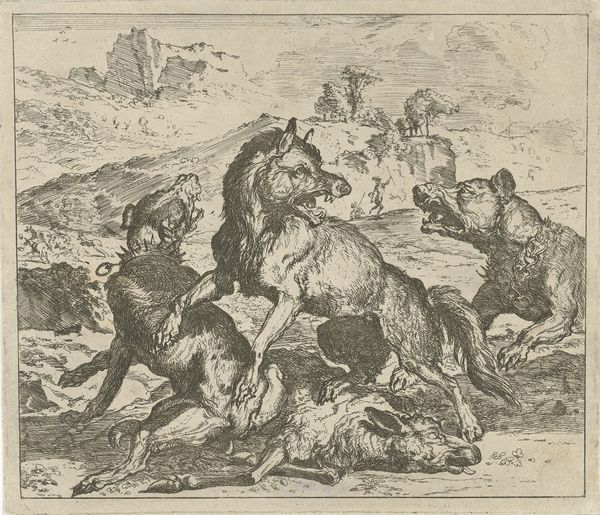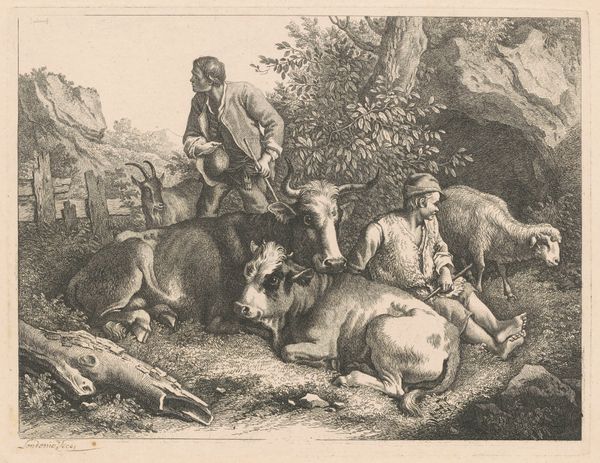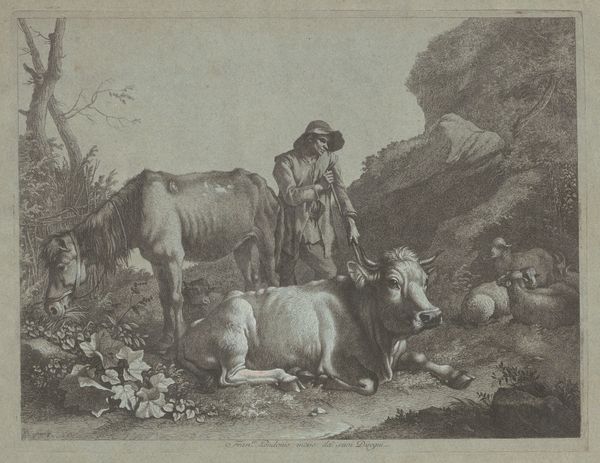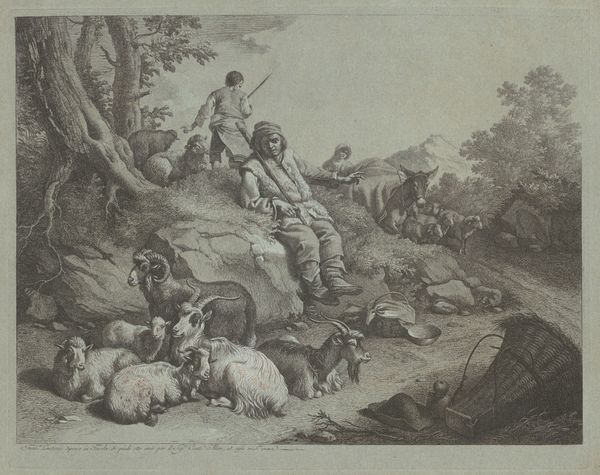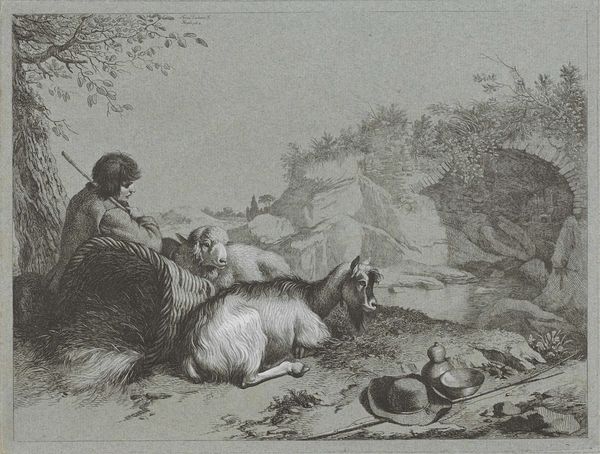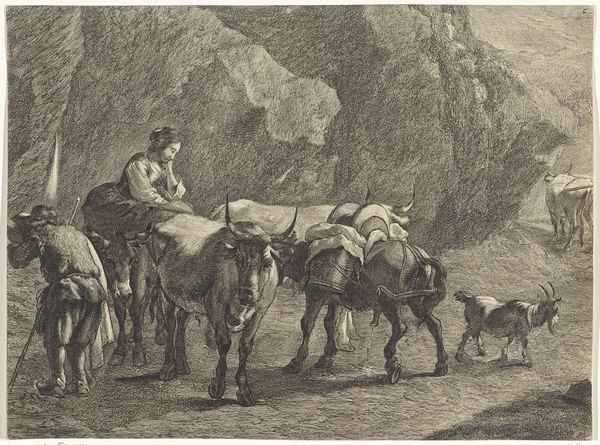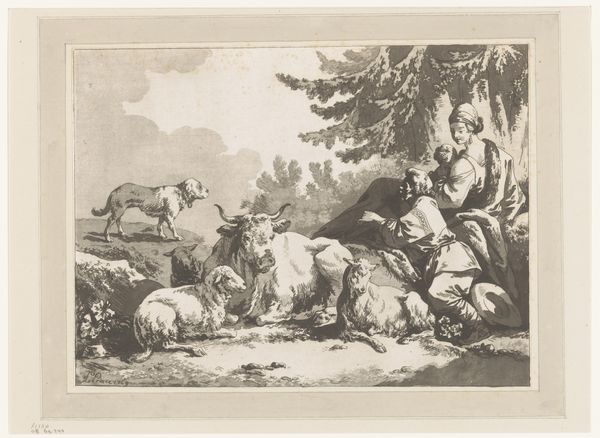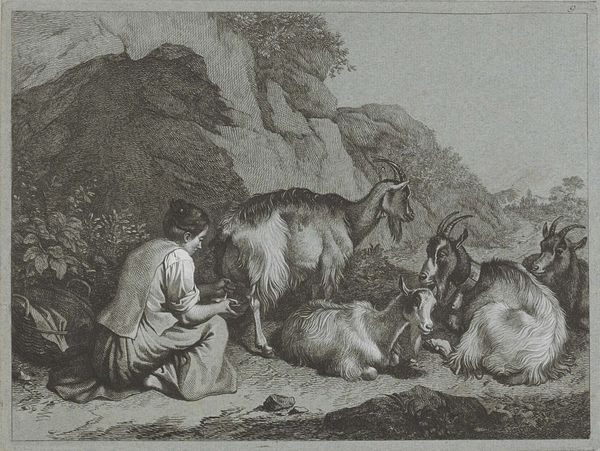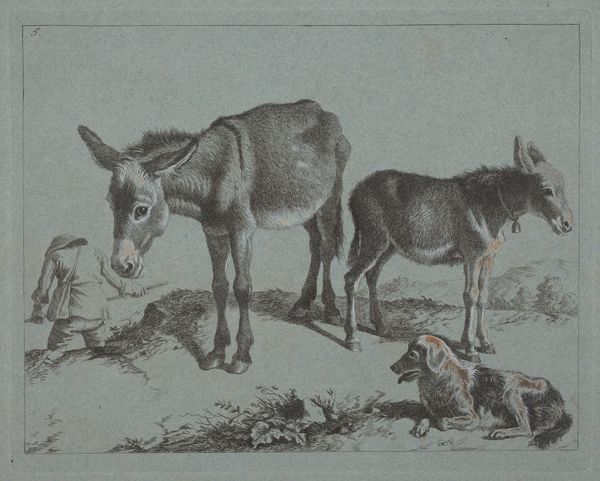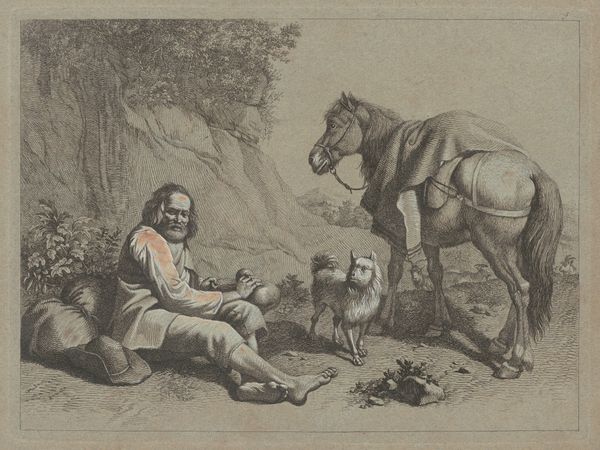
print, etching
# print
#
etching
#
landscape
#
genre-painting
#
rococo
Dimensions: plate: 21.3 × 28.5 cm (8 3/8 × 11 1/4 in.) sheet: 28.5 × 41.1 cm (11 1/4 × 16 3/16 in.)
Copyright: National Gallery of Art: CC0 1.0
Curator: Francesco Londonio created "Reclining Shepherd with a Sack" around 1763. It’s an etching that offers a glimpse into genre-painting during the Rococo period. Editor: It gives off a wonderfully serene vibe. You see this exhausted shepherd just sprawled out, utterly at peace amongst his animals and nature. The landscape almost seems to sigh with contentment, you know? Curator: I appreciate you noting that serenity. Londonio often represented the pastoral life, but it’s worth remembering the social hierarchies that existed during the 18th century. Genre scenes such as these helped to establish idyllic or picturesque qualities to the everyday labor of rural workers, particularly for the consumption of wealthier urban populations. Editor: Oh, for sure, it’s always good to unpack the layers there! But technically, the cross-hatching creates some fantastic textural moments; the almost fluffy dog, the coarse hair of the horse…and the shepherd’s garments just give such a sensory vibe, which leads into questioning authenticity and whether it speaks truthfully about reality. Curator: Yes, the etching medium definitely enhances that tactile quality. One could also discuss Londonio's place in a broader narrative around the “cult of sensibility” popular in Europe. There’s an attempt to evoke sentiment through detailed rendering. Editor: It’s interesting how it triggers this simultaneous appreciation and questioning of realities. On the one hand, you admire the artwork but on the other, the topic pushes you to consider all aspects from an era. Curator: Indeed. I find it's often about balancing the appreciation for artistic skill with an awareness of historical context and social underpinnings. How did this idyllic imagery, disseminated as prints, shape ideas around labor? How might such representations of the countryside gloss over social issues? Editor: Questions within questions, within brushstrokes! And ultimately, that's the delicious complexity of art, right? We’re left to ponder. Curator: Exactly, and hopefully to question assumptions we might not otherwise think about. It pushes us towards dialogue, in its way a quiet revolution in art history.
Comments
No comments
Be the first to comment and join the conversation on the ultimate creative platform.
